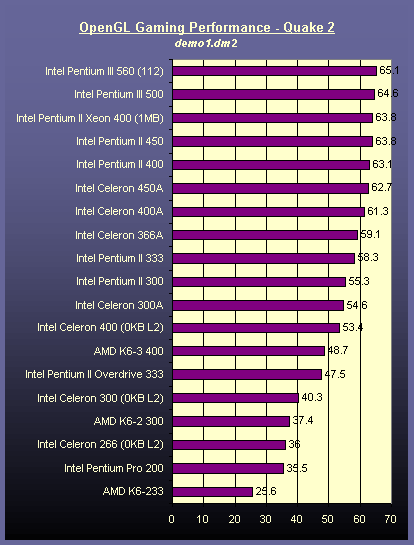Intel’s 1.13GHz CPU Recalled – Is Intel resorting to desperate measures?
by Anand Lal Shimpi on August 29, 2000 12:17 AM EST- Posted in
- CPUs
It’s been a very long time since I’ve written an Editorial for AnandTech, mainly because there hasn’t been a need to. But with the recent course of events surrounding the launch and later the recall of the 1.13GHz Pentium III, it is definitely time for a few comments from yours truly.
Success is something that can be measured by a variety of factors, some consider wealth, material possession, and stature to all be measures of it, while for others, personality, integrity and honesty, especially when faced with adversity are the true measures of success. The only true point of agreement most of us can come to is that in order to be successful, one must undoubtedly work very hard for it.
Intel has definitely achieved a visible level of success. The computer industry quite possibly wouldn’t be the same if it weren’t for the advancements that Intel has brought to the arena. Their Pentium Pro (P6) processor was the first x86 CPU that could truly be positioned against the RISC (Reduced Instruction Set Computing) competitors and finally made the high end market take x86 processors seriously. The Pentium II was the first x86 processor to bring a high speed L2 cache down to the desktop market, the CPU also paved the way for a number of variants to be produced. The resulting Celeron gave new meaning to the value market segment, offering performance that was far from low-end, yet garnished a price tag that was definitely far from high-end. There isn’t a doubt about it, Intel has definitely worked hard to get to where they are today, and the industry as a whole has definitely benefited from their presence.
Throughout the majority of 1999, Intel had very little to worry about in terms of competition. While the AMD K6-2 and K6-III processors were great for Socket-7 motherboard owners, most users that were looking to purchase a new system would have to get quite a bit of convincing before journeying down the Socket-7 path. As more and more incompatibility problems began to surface between the two main Socket-7 chipsets with AGP support (ALi Aladdin V & VIA MVP3) and some of the most popular graphics chipsets (NVIDIA TNT2), the headaches associated with owning a Socket-7 system quickly became not worth it, especially with the Celeron positioned at a very affordable level. Not only were AMD’s flagship solutions plagued with more incompatibility problems than their Intel counterparts, they were also the victim of sub-par FPU performance even when compared to Intel’s “low-end” Celeron processor. AMD’s 3DNow! instruction set yielded some improvement in this category, unfortunately it wasn’t enough to give AMD the edge over Intel.

Intel used to completely dominate, especially under games as can be seen
from the above chart in our February 1999
review of the Pentium III
Intel was clearly enjoying the life of a success, with no major competition present in the industry, and a secure grip on the performance crown in value, desktop and performance market segments. Unfortunately for Intel, this paved the way for AMD to come in and take quite a bit of the lime light with their Athlon processor that was released in August of 1999.










0 Comments
View All Comments